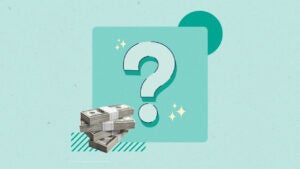A comprehensive guide to debt relief programs

Key takeaways
- Debt relief options can help reduce your balances or lower your interest rates.
- Debt consolidation loans and balance transfer credit cards make it easier to manage your debt and potentially save a bundle in interest.
- You could also find relief if your creditors agree to enroll you in a debt forgiveness program.
- Debt management and debt settlement programs are other alternatives if you’re unable to resolve debts on your own.
While it’s commonly regarded as negative, debt isn’t inherently bad. A mortgage or auto loan can help you with housing or transportation. At the same time, credit cards can provide liquidity to purchase needed products, services or experiences.
Debt becomes a problem when you don’t have the means to pay it off or owe too much to too many companies to pay down the balances.
Help is available through many debt relief options. Determining how each option might fit your financial situation can help you make the best decision.
Types of debt relief
Debt relief is an umbrella term for multiple programs that can help lower or eliminate your debt. These programs can help you do any of the following:
- Decrease what you owe.
- Reduce or eliminate the debt’s interest rate.
- Write off part or all of your debt.
Debt consolidation loans
Debt consolidation loans involve money you borrow from a bank, credit union or other lending institution to pay the entire amount you owe to debtors and creditors. The entire debt is consolidated into one amount you pay back over time.
Many people gravitate to consolidation to pay off multiple loans because it simplifies budgets and can mean smaller monthly payments. The extra money can be put elsewhere, like savings or retirement accounts.

Pros of debt consolidation
- Consolidation can assist with budgeting efforts.
- It can provide a lower interest rate than credit cards.
- Depending on the loan’s term, you may pay down debt faster.

Cons of debt consolidation
- Loans require a good to excellent credit score (670 or higher).
- The loan application could lower your credit score.
- Upfront fees and costs can make borrowing costlier than the original debt payments.
When to use: If you have a good-to-excellent credit score and the costs and interest rates are less than your current payments.
Debt forgiveness programs
With a debt forgiveness program, a creditor eliminates part or all of your debt based on factors like financial distress. Debt forgiveness is typically used for non-credit-card debt, like student loans, mortgages, medical debt or even taxes.

Pros of debt forgiveness programs
- All or part of your loan could be wiped out.
- Debt forgiveness can help you avoid drastic measures like bankruptcy.
- Depending on the plan, you can pay down debt more quickly.

Cons of debt forgiveness programs
- Participation could hurt your credit score.
- Some debt forgiveness methods can be complex and time-consuming, with no guaranteed outcomes.
- The IRS considers forgiven amounts as taxable income.
When to use: If you’re interested in paying down overwhelming non-credit-card loans and want to avoid bankruptcy.
Balance transfer credit cards
A balance transfer credit card allows you to move existing debts from other credit cards to a single one. Balance transfer credit cards offer a 0 percent intro annual percentage rate (APR) on a balance transfer, then give you a period to pay off that amount without incurring interest charges.
The introductory rate must stay in effect for at least six months (unless you’re more than 60 days late on a payment). Some introductory rates can last up to 18 months or longer.

Pros of balance transfer cards
- It can help pay down debt more quickly.
- It reduces multiple credit card payments to one monthly payment.
- No interest rate accrues during the introductory period.

Cons of balance transfer cards
- A balance transfer fee (3 percent to 5 percent of the amount transferred) could add extra expense.
- Failure to pay the entire amount could lead to costly interest rate charges.
- You need a good to excellent credit score to qualify (670 or higher).
When to use: If you can pay off the card’s entire balance in time and the transfer fees don’t add more financial stress to your situation.
Debt management program
Through a debt management program (DMP), you work with a credit counselor on a roadmap to help you get out of debt sooner. The plan includes budget development to help you better manage your finances. The credit counselor can also work with creditors to negotiate concessions like fee waivers or reduced interest rates.
If creditors agree to the plan, you make the one monthly payment specified to the credit counseling agency, which then divides that amount between each creditor participating in the plan. While credit counseling agencies are nonprofit, a fee could be attached to each monthly payment you make.

Pros of debt management programs
- You obtain a personalized roadmap to help better manage your finances.
- The company you work with can help negotiate concessions from creditors, like lower interest rates.
- You make only one payment a month, which helps with budgeting and can improve your cash flow.

Cons of debt management programs
- Some debts aren’t eligible, and not all creditors will participate.
- You must close all open credit accounts (and won’t be allowed to apply for new credit during the process).
- You must make consistent payments to continue participation.
When to use: If you’re willing to work with a company that helps you develop a repayment plan and a budget.
Debt settlement programs
Debt settlement programs involve negotiating with creditors to reduce the total debt owed, usually through a lump-sum payment that’s less than the full balance. These programs are often managed by debt settlement companies, which may ask clients to stop paying creditors while funds are accumulated.
Although debt settlement can reduce overall debt, it negatively impacts credit scores and may result in fees and taxes on the forgiven amount. Furthermore, there’s no guarantee creditors will agree to settle, and the process can take several months or even years to complete. Many experts consider bankruptcy a better option because of the risks debt settlement involves.

Pros of debt settlement
- It can help you settle your debt for less than you owe.
- This could be a way to avoid bankruptcy.
- After agreeing to a settlement, creditors will no longer hassle you with collection calls.

Cons of debt settlement
- Creditors might not be willing to negotiate.
- It harms your credit score.
- Settlement can take many months or years.
- Written-off debt could be considered taxable.
- Your debt may increase because of fees.
When to use: If you have high levels of unsecured debt (i.e., medical bills or credit cards), struggle to keep up with minimum payments and have tried other debt-relief options. However, this should be a last resort option.
Bankruptcy
Bankruptcy is a legal option that can provide a path to debt relief. However, this should be considered the tool of last resort when you’ve tried every other way to resolve your credit issues. There are two common forms of bankruptcy:
- Chapter 7 (property liquidation to pay creditors)
- Chapter 13 (court-mandated payment plan to pay creditors)

Pros of bankruptcy
- Creditors can’t hassle you until a repayment plan has been finalized or the bankruptcy is discharged.
- Debts could be settled for less than what was owed, while others might be written off.
- You could get a fresh start and a clean slate on which to rebuild your financial foundation.

Cons of bankruptcy
- Bankruptcy can be expensive due to attorney and court fees.
- Depending on where you live and the type of bankruptcy, you might have to sell some of your assets (non-retirement investments, furniture, or jewelry).
- The bankruptcy can stay on your report for seven to ten years.
When to use: Bankruptcy should be used if other debt relief (other than debt settlement) options haven’t worked for you. Use it only if you have a large amount of debt you can’t pay off during your lifetime, experienced an extreme income loss or are being sued for money you can’t repay.
When should I seek debt relief?
Unfortunately, people can get over their heads when amassing a lot of debt. The New York Federal Reserve’s Q2 2024 numbers reported that total household debt was $17.80 trillion, and credit card balances increased by $27 billion from Q1 to $1.14 trillion.
Compounding the problem is an increase in credit-card delinquencies for maxed-out borrowers.
You don’t need to be maxed out on your credit cards to be considering debt relief. Here’s when you might consider using a debt relief program:
- Minimum payments aren’t reducing debt: If you can only make minimum payments, yet your balances are hardly decreasing due to high interest, a debt relief program might help lower interest or restructure payments.
- Your debt-to-income ratio is too high: When a significant portion of your income goes toward debt payments, leaving little for savings or necessary expenses, it can be a sign that debt relief could improve your financial balance.
- Falling behind on payments: If you’re often late on payments or at risk of defaulting, seeking debt relief can help you avoid collections and protect your credit.
- Debt is causing significant stress: When debt impacts your mental health, relationships or quality of life, it might be time to explore relief options to regain peace of mind.
Bottom line
Debt relief programs can be valuable tools for managing unmanageable debt, but each option has unique advantages and trade-offs. Understanding the different programs and how they work is the first step toward regaining control of your finances.
Debt management plans, settlement programs, balance transfers and consolidation loans have specific requirements, benefits and potential impacts on your credit score, so taking the time to learn about these distinctions is essential. Consulting with a reputable credit counselor or financial advisor can help you evaluate your choices and decide on a plan that aligns with your needs and offers the best path forward. With informed decisions, guidance and a proactive approach, debt relief can be a powerful tool to help you progress toward financial stability and a debt-free future.






